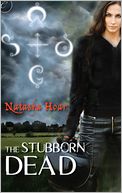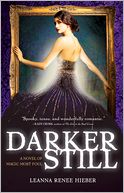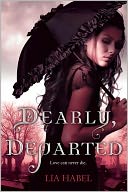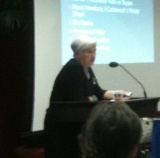 Martin Luther King Day is tomorrow. No mail. No school. It’s a day off for a lot of people. But I’ll be working, Galen will be working. There’s no rest for the wicked, as my mom usually says to me. (And I fully recognize the implication!)
Martin Luther King Day is tomorrow. No mail. No school. It’s a day off for a lot of people. But I’ll be working, Galen will be working. There’s no rest for the wicked, as my mom usually says to me. (And I fully recognize the implication!)
![]() Mid-January in this library household means one other thing–the impending doom of the American Library Association Midwinter Conference. January 20-24, this year in Dallas, Texas. At least it might be warm? (2010 was in Denver, 2013 will be in Philadelphia, this point is very much NOT moot.)
Mid-January in this library household means one other thing–the impending doom of the American Library Association Midwinter Conference. January 20-24, this year in Dallas, Texas. At least it might be warm? (2010 was in Denver, 2013 will be in Philadelphia, this point is very much NOT moot.)
ALA Midwinter is a major household disruption. We bring out suitcases. The cats hate suitcases. The suitcases take their people away! They might have to train new staff. This is very bad.
But the conference represents major headaches all the way around. In June in New Orleans, our hotel did not have connectivity in the rooms, so I only posted once, using Galen’s iPhone as my net connection. Not fun. This conference, I admit I’m going to queue up as much as I can, just in case connectivity is a tad “iffy”.
On the one hand, plane rides are still a terrific opportunity for reading. Not to mention that lovely extra two-hour wait ahead of the flight for “security”. On the other hand, ALA conferences are a sea of Advance Reading Copies, unfortunately all print. What’s a girl to do?
I have four books to read on the airplane on my way to and from Dallas, because these are scheduled for release January 24. Except I really only have three.
 Heiress Without a Cause by Sara Ramsey popped up on NetGalley as a historical romance debut that just sounded interesting. According to the blurb copy, it was selected by Barnes & Noble for an exclusive release on the NOOK beginning Jan. 23rd.
Heiress Without a Cause by Sara Ramsey popped up on NetGalley as a historical romance debut that just sounded interesting. According to the blurb copy, it was selected by Barnes & Noble for an exclusive release on the NOOK beginning Jan. 23rd.
 The Stubborn Dead by Natasha Hoar was featured in January 2012 print issue of RT Book Reviews as one of the five debut authors not to miss in 2012. So I couldn’t resist picking up first book, about a “rescue medium” when it appeared on NetGalley. Whether this is urban fantasy or paranormal romance or a combination, it looks like a terrific start for this new author.
The Stubborn Dead by Natasha Hoar was featured in January 2012 print issue of RT Book Reviews as one of the five debut authors not to miss in 2012. So I couldn’t resist picking up first book, about a “rescue medium” when it appeared on NetGalley. Whether this is urban fantasy or paranormal romance or a combination, it looks like a terrific start for this new author.
 Daughter of the Centaurs by Kate Klimo is the first book of the Centauriad. It’s YA and it’s something I pulled from NetGalley when I was researching YA genre lit for a table talk I did for the South Carolina Collection Development mini-conference. Since this is definitely fantasy, I’m going to give it a try.
Daughter of the Centaurs by Kate Klimo is the first book of the Centauriad. It’s YA and it’s something I pulled from NetGalley when I was researching YA genre lit for a table talk I did for the South Carolina Collection Development mini-conference. Since this is definitely fantasy, I’m going to give it a try.
 Banshee Charmer by Tiffany Allee is the last book on my calendar for January 24. I had downloaded it from NetGalley because I liked the premise, an urban fantasy about a half-banshee detective solving a serial killer murder. Sounded cool. Then Book Lovers Inc asked me to review it for them. Cool beans, I already had it. I’ve read it, loved it, and written both reviews already, one for my blog and one for BLI. Done and dusted. I just can’t queue anything up here until the BLI review is posted.
Banshee Charmer by Tiffany Allee is the last book on my calendar for January 24. I had downloaded it from NetGalley because I liked the premise, an urban fantasy about a half-banshee detective solving a serial killer murder. Sounded cool. Then Book Lovers Inc asked me to review it for them. Cool beans, I already had it. I’ve read it, loved it, and written both reviews already, one for my blog and one for BLI. Done and dusted. I just can’t queue anything up here until the BLI review is posted.
And now for putting the cap back on the old recap.
My review of Nick Marsh’s Soul Purpose is already scheduled to post on Tuesday. I’ll get to Past Tense after I come back from Dallas. BLI says I can have two months. I promise I won’t take anywhere near that long! Besides, Soul Purpose was too much fun for me to wait that long to read the sequel. I want to see what happens next.
And I received an unstained copy of Todd Grimson’s Stainless this week. Woo-hoo! I take one “dead-tree” book with me on the plane, so I have something to read for those horrible minutes when they make me turn off my iPad. Stainless might be it.
I also finished A Lady Awakened and Don’t Bite the Messenger from last week, so reviews for both those books will be part of this week’s postings.
 Reaching back, to the Christmas Nightstand, I’m in the middle of J.L. Hilton’s Stellarnet Rebel. As a blogger, and a science fiction fan, I’m caught up in the story on multiple levels. I mean wow, living on a space habitat, kind of like Babylon 5 or Deep Space 9. And, earning your living by being a blogger, live, full-time pretty much, total life immersion blogging. 3,000 posts or 3 years until she can go back to Earth. And will she want to?
Reaching back, to the Christmas Nightstand, I’m in the middle of J.L. Hilton’s Stellarnet Rebel. As a blogger, and a science fiction fan, I’m caught up in the story on multiple levels. I mean wow, living on a space habitat, kind of like Babylon 5 or Deep Space 9. And, earning your living by being a blogger, live, full-time pretty much, total life immersion blogging. 3,000 posts or 3 years until she can go back to Earth. And will she want to?
 Going even further back, I took a look at the 12/17/11 Nightstand and read Forever Mine, the prequel novella to Delilah Marvelle’s Forever and a Day. Yes, I’m a completist. I have to read the whole series.
Going even further back, I took a look at the 12/17/11 Nightstand and read Forever Mine, the prequel novella to Delilah Marvelle’s Forever and a Day. Yes, I’m a completist. I have to read the whole series.
That’s all we have time for in this pre-conference madness issue of the Nightstand. We’ll see you next week, live from Dallas, hopefully not blogging from the hotel lobby. The bar, on the other hand…
Tomorrow will be the Carina Press December 2011 edition of Ebook Review Central. And it will seem like Christmas all over again.














